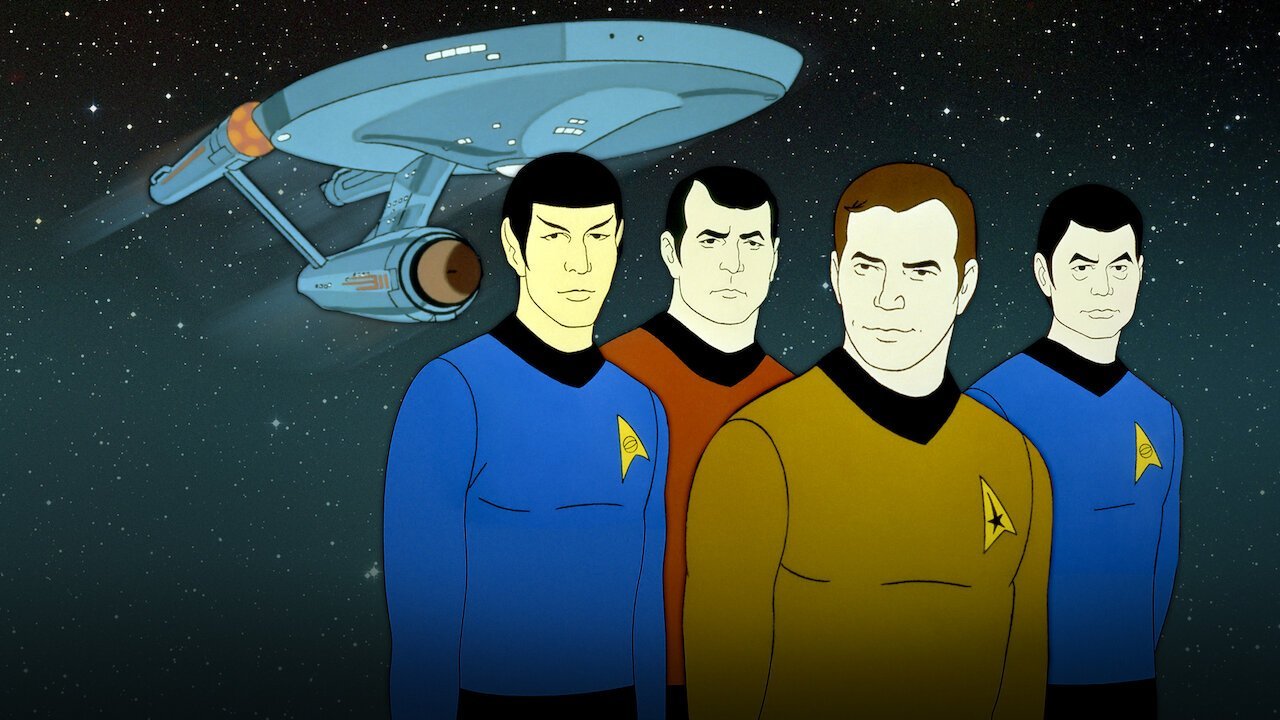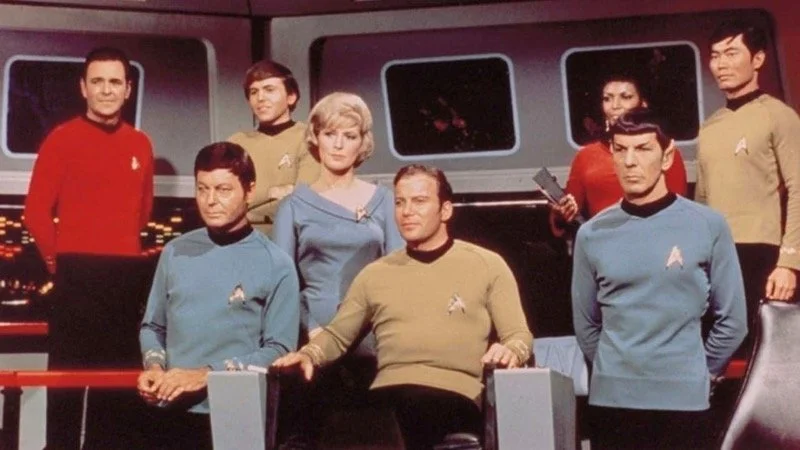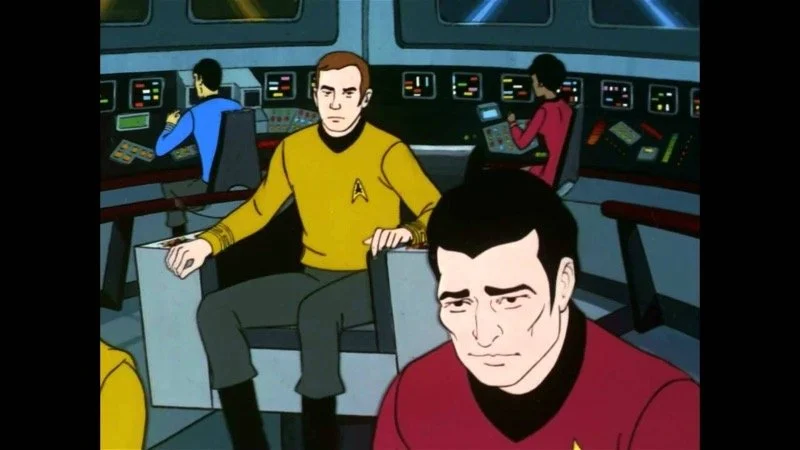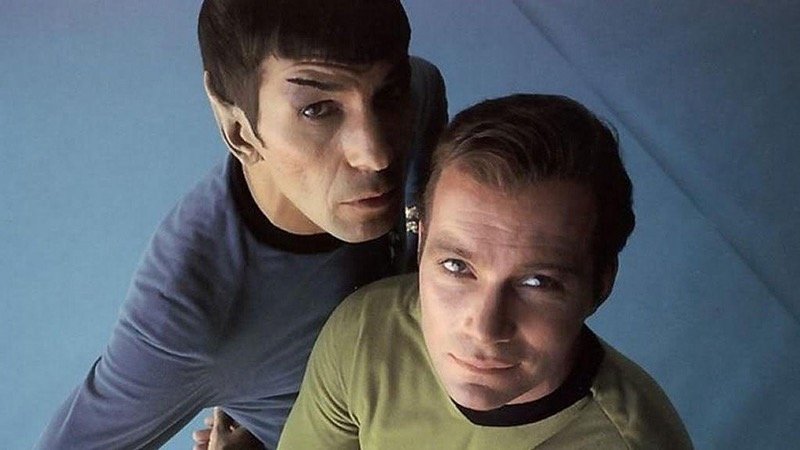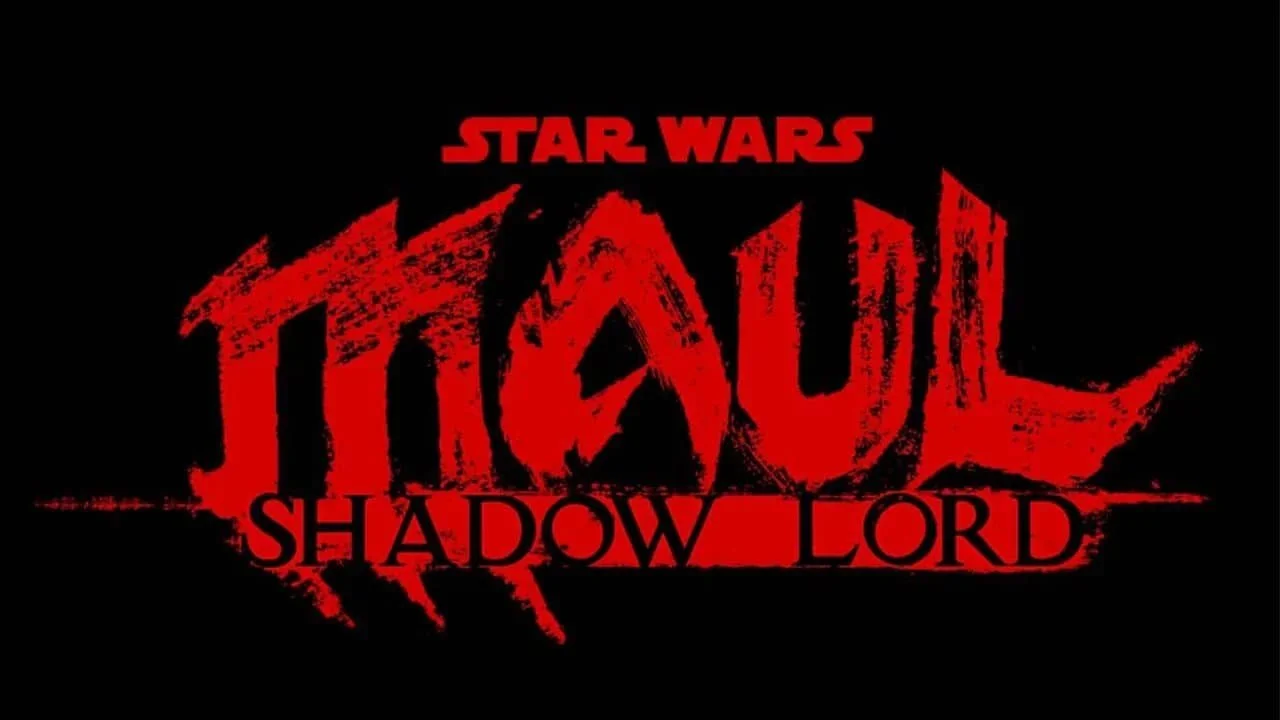50 Years Of 'Star Trek' Animation: Looking Back At The Animated Series
Image Source: Netflix
Star Trek Day every year on September 8 celebrates the shows, movies, and other memorabilia of the Star Trek universe. Star Trek, now called Star Trek: The Original Series to differentiate from later iterations, aired in the United States 57 years ago, on September 8, 1966. The Original Series ran for three years after almost being canceled just two seasons in. The fanbase supported the series so strongly that over 110,000 letters were sent from fans to NBC to continue the series after season two. The Enterprise’s five-year mission can be split between the three years of The Original Series and the two years of Star Trek: The Animated Series, finishing out the ship’s voyage under Captain Kirk’s leadership.
As we celebrate 57 years of Star Trek this year, we also celebrate 50 years of Star Trek animation, from The Animated Series to the more recent Star Trek: Lower Decks and Star Trek: Prodigy. The animation company Filmation produced Star Trek: The Animated Series from September 8, 1973 to October 1974. About three years after The Original Series went off the air, there was a reprise of interest as reruns gained popularity with the growing fanbase. NBC had updated the factors that comprised the Nielsen ratings and they found out that they had made a grave error. The Original Series had achieved stellar ratings with its target demographic, men aged 18-45. The revised Nielsen rating system also revealed that The Original Series was one of the most successful TV shows ever aired on the network. Paramount Pictures and NBC immediately wanted to put it back on the air, but realized that the production would cost way too much and many props and sets had been scrapped or even stolen. It would have cost around $750,000 to recreate all of the lost production assets; it was out of the question.
RELATED:
Image Source: The Movie Database
As an alternative, the idea for The Animated Series was born. The original cast came back together for the first time since January 1969 to reprise their roles from The Original Series. By June 4, 1973, they had recorded the first three episodes of The Animated Series. The only actor who did not return was Walter Koenig, who played Ensign Chekov in The Original Series. He did come back to write an episode of The Animated Series, “The Infinite Vulcan.” Other guest actors to return and reprise their roles included Sarek, played by Mark Lenard; Harry Mudd, played by Roger C. Carmel; and Cyrano Jones, played by Stanley Adams. Almost all other side characters and aliens were voiced by members of the main crew, typically Majel Barrett, James Doohan, and Nichelle Nichols.
Not only would the cost of filming be much less than that of its live-action predecessor, but there was also an ability to portray otherworldly characters and settings. A prime first example is shown in the first episode of The Animated Series, “Beyond the Farthest Star,” which features an alien vessel much larger than the Enterprise. Later, in the episode “The Infinite Vulcan,” there are two characters sized as giants. Either episode would have been almost impossible to produce in live-action, but The Animated Series took them, and other episodes like them, in stride. Another key difference was the ability to have recurring complex alien species, including Lieutenant M’Ress and Lieutenant Arex. Both bridge officers on the Enterprise, M’Ress is a member of the humanoid feline species, Caitians, and Arex is an Edosian, a species with three arms and three legs.
The canonicity of The Animated Series has frequently been debated. Even Gene Roddenberry, the creator of Star Trek, declared that all episodes of The Animated Series were not canon as early as 1988. Over time, however, Roddenberry mentioned that some episodes, notably the Spock-centric episode “Yesteryear,” would be integral to the Star Trek universe for decades to come and could be used as canon reference material. Roddenberry was disappointed that The Animated Series did not gain enough of a following to get The Original Series back on the air, as he intended from the beginning. He also mentioned that if they knew that the story arcs of Star Trek would be able to continue in later live-action series, the production would have focused on substantial storylines and stayed more practical. Paramount has since deemed the series canon again, with the release of The Animated Series on DVD in 2006.
Captain Kirk and Ensign Walking Bear in “How Sharper Than a Serpent’s Tooth.”
Image Source: YouTube
The Animated Series was also the first Star Trek series to win an Emmy with the second season episode, “How Sharper Than a Serpent’s Tooth.” Filmation submitted this episode for consideration in the Best Children’s Series category, much to the surprise of co-producer Lou Scheimer due to The Animated Series, and Star Trek as a whole, not being a kids’ show. Roddenberry, the producers of the show, and the writers of the episode, Russell Bates and David Wise, were thrilled that Star Trek won the Emmy, even though it was unexpected.
Writers of later Star Trek series have pulled references from The Animated Series. The 1974 episode “The Practical Joker” was the first appearance of a recreation room, which would become the holodeck later on in Star Trek: The Next Generation. However, the writers on The Next Generation didn’t remember these recreation room scenes when they introduced the holodecks into the new show, according to D.C. Fontana, who was a writer and associate producer on both The Animated Series and The Next Generation. Additionally, Commodore Robert April appeared in The Animated Series finale, “The Counter-Clock Incident,” and was described as the first captain of the Enterprise. It would be years before then-Admiral April would reappear in a Star Trek series in Star Trek: Strange New Worlds.
Image Source: IGN
The Animated Series episode “Yesteryear” in particular is critical to the understanding of the Star Trek universe in the ways it displays Spock’s childhood and how it shows his home planet, Vulcan. It also serves as further background for The Original Series episode “Journey to Babel,” the first time that the audience meets Spock’s parents, Sarek and Amanda Grayson. “Yesteryear” was only the second episode of The Animated Series and, yet, was essential for displaying many details that set up years of Star Trek canon yet to come. D.C. Fontana wrote both “Journey to Babel” and “Yesteryear,” which allowed for some information about Spock’s life and about Vulcan that got ultimately cut from The Original Series episode to still come alive in “Yesteryear.”
To celebrate Star Trek Day and 50 years of Star Trek animation, back in July 2023 it was announced that The Animated Series would be revived in comic form. The comic, from IDW Publishing, will come out digitally this month and in physical print next month at the New York Comic Con. Later this year, CBS Studios will premiere a series of animated promo sequences to continue the 50th anniversary celebration. Actors from multiple Star Trek series will appear as their animated counterparts in these episodes: Will Riker will be played by Jonathan Frakes, Quark will be played by Armin Shimerman, and Saru will be played by Doug Jones. Casper Kelly serves as the creative consultant for both the comic and the new animated episodes.
READ NEXT:
Hello, World!

